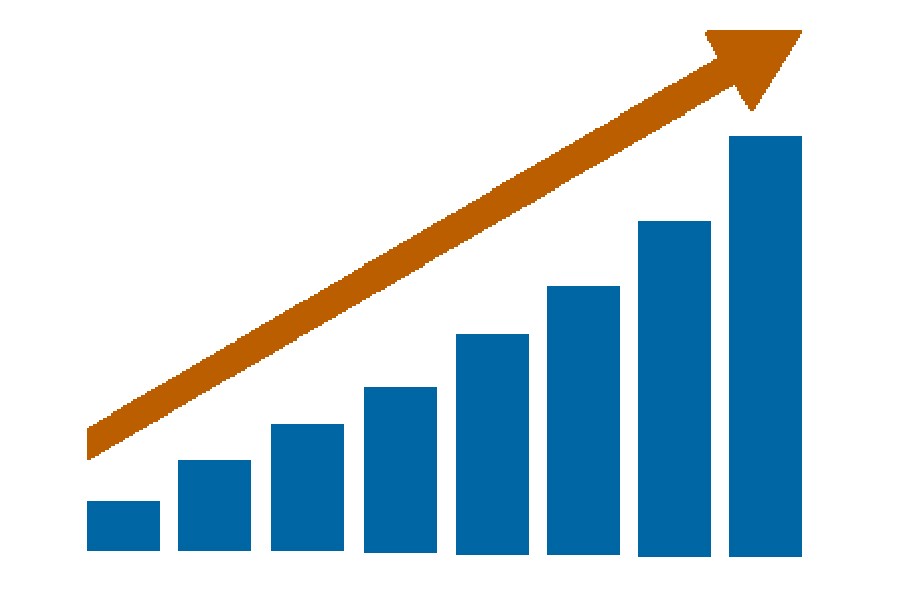
Published :
Updated :

There is no doubt that Bangladesh has performed well over the past few years on many socio-economic indicators. One of the reasons why Bangladesh did well is that its development priorities have been reflected in the national development plans. At the core of the development strategies of Bangladesh has been poverty reduction. Bangladesh has successfully reduced its poverty rate to 24.3 per cent in 2016 from 48.9 per cent in 2000.
However, there is another side of the coin. Recently, the growth elasticity of poverty for Bangladesh has declined. Besides, Bangladesh has experienced an increase in inequality. As a consequence, in spite of being one of the fastest growing economies and having moderate growth rate, Bangladesh may find it a difficult task to achieve the goal of inclusive development in the coming years. Therefore, the pertinent question is: "Would Bangladesh be able to sustain the current rate of growth if inequality continues to rise?"
The phenomenon of inequality in Bangladesh is predominantly observed between income groups and regions. The Gini co-efficient, the measure of inequality, was estimated at 0.483 at the national level for 2016, when in 2010 it was 0.458. This indicates that the concentration of income increased during the period of 2010-2016. This statement can be understood better by looking into the share of household income deciles to total income. In the year 2016, the share of deciles 1 to 5 was only 19.24 per cent of total income although they comprised 50 per cent of the population. The share was 20.33 per cent in 2010.
The increasing inequality is observed in urban areas during the period of 2010-2016. The Gini co-efficient was 0.452 for urban areas in 2010, which increased to 0.498 in 2016.
The higher disparity in urban areas compared to rural areas also continues. In 2016, the urban areas had a Gini co-efficient of 0.498 and it was 0.454 for rural areas.
Another key feature of inequality in Bangladesh is the disproportion of income between regions. Though the upper and lower poverty rates went down, they were still higher by 2.1 and 2.0 percentage points respectively than the national rates for rural areas in 2016. Out of eight divisions, five divisions (Barishal, Khulna, Mymensingh, Rajshahi and Rangpur) had higher upper poverty rates than national upper poverty rate in 2016. In the same year, Rangpur (47.2 per cent) had the highest upper poverty rate amongst all divisions.
The scenario is almost similar for lower poverty rate. During the years 2010-2016, even though the poverty rates at both upper line and lower line decreased for urban and rural areas, they were still higher for rural areas (26.4 per cent and 14.9 per cent respectively).
The inequality between delta and non-delta regions should also be considered while discussing the dynamics of inequality in Bangladesh. The delta region comprises of the districts that are at risk of climate change and environmental degradation and inequality makes the people from those districts the most vulnerable.
Despite having mid-term and long-term poverty reduction strategies, why has Bangladesh been unsuccessful in reducing inequality? One of the potential answers can be the Kuznets hypothesis: "As an economy develops, market forces first increase and then decrease economic inequality". Since Bangladesh is in its development stage, inequality is showing increasing trend. Besides, two major factors for inequality are: (i) absence of focused policies and (ii) weak institutions.
Inequality can hurt the inclusive and sustainable economic growth by hindering human capital accumulation. There is empirical evidence that inequality does have a negative and statistically significant impact on growth. An Organisation for Economic Co-operation and Development (OECD) analysis suggests that rising inequality by 3 Gini points would drag down economic growth by 0.35 percentage point per year. If inequality continues to rise, education opportunities for disadvantaged individuals will be undermined; social mobility will be lowered; and skills development will be hampered and thus, Bangladesh will fail to sustain the current growth rate.
The nature of economic growth for Bangladesh has been inequality-enhancing. The available national statistics affirms that there is inequality at different levels and it is in upsurge. The existing interventions have remained unsuccessful at reducing the regional inequality at an expected level. The income gap between lower and higher income groups is rising.
To sustain the current growth rate, there is no alternative to reducing inequality. To do that, Bangladesh has to emphasise on reforming its development policies and restructuring relevant institutions. The loopholes of the existing interventions have to be scrutinised. The regional strategies, especially for northern region, need to be revisited and reshaped. Under the social protection programme, the tendency to miss targets and leakage problems need to be resolved. Overall, there should be apt policies and institutions promoting demand-side driven skills development and generating more employment.
Zubayer Hossen is a Research Economist at South Asian Network on Economic Modeling (SANEM)


 For all latest news, follow The Financial Express Google News channel.
For all latest news, follow The Financial Express Google News channel.